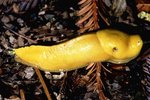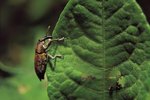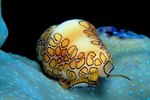
Giant African land snails (genus Achatina) are large terrestrial snails native to eastern Africa and considered invasive in several other nations. GALS aren't poisonous but it is possible for them to transmit disease, especially when their mucus is used in topical treatments or the snails are eaten raw.
Giant African Land Snails and Disease
Although not poisonous, giant African land snails are capable of transmitting some diseases to humans. These snails can become carriers of Angiostrongylus cantonensis, a parasitic worm, if a snail eats droppings from a rat that also carries the disease. Infection by rat lungworm, as it's more commonly called, can cause meningitis in humans. The worm could be transmitted from a snail to a human if the human ingested the snail. It's also possible for GALS to transmit salmonella and other bacteria to people, especially if the snails were living in the wild. Bacteria may be transmitted to a human by consuming or handling a GALS.
Using GALS Mucous for Medicinal Purposes
In some cultures the GALS' slime is valued for its supposed healing properties. The animals were spread in South America by culebreros, salesmen peddling live snails as well as healing and cosmetic concoctions made from snail mucus. Products including giant African land snail slime are used as facial treatments and skin creams. Outbreaks of meningitis have been linked to the use of these products in South America. According to Richard Gaskalla, head of plant industry for Florida's Department of Agriculture and Consumer Services, one woman in Florida went to the hospital with complaints of a stomach ailment after ingesting juices from a live snail as part of a religious rite. The snails have been linked to a religious sects in southern Miami, where the species' invasion is severe.
Giant African Land Snails as Food
Gastropods are almost all muscle. Because they're full of protein and easy to cultivate, giant African land snails are often eaten like oversized escargot in certain parts of Africa, Asia and South America. They may be eaten raw or cooked. One preparation method is to slice off the snail's muscular foot and cook it like a steak. In Asia they're served as a form of sushi. Eating raw snails is much more likely to cause illness than consuming cooked snails.
GALS as an Invasive Species
Giant African land snails have been classified as an invasive species in the United States and several other countries, including Canada and many South American nations. GALS are listed in the Global Invasive Species Database's "100 World's Worst Invasive Alien Species." Because they reproduce at such a prolific rate, they're considered a threat to the natural ecosystem in many countries. One snail can lay as many as 300 eggs per month. They're also considered a threat because, as herbivores, they can damage crops and other natural resources. GALS are known to eat more than 500 different plant species. They may even eat at the outer surfaces of homes when food is scarce.
Giant African Land Snails as Pets
Although illegal in the U.S., GALs are legal to keep as pets in the United Kingdom and many other countries. Captive-bred snails are much less likely to carry diseases or parasites than wild snails. Also, evidence has not yet been found that rats in the United Kingdom carry the rat lungworm, making captive-bred snails from the UK much less likely to transfer disease to humans. They're a common pet with children because the snails don't mind being handled and are relatively easy to care for. Although it's legal to keep GALS as pets in the UK, it's illegal to release the eggs or animals into the wild.
References
Resources
Photo Credits
-
Comstock/Comstock/Getty Images
Writer Bio
Madeline Masters works as a dog walker and professional writer. In the past she has worked as a fitness columnist, fundraising copywriter and news reporter. Masters won two Pennsylvania Newspaper Association Awards in 2009. She graduated from Elizabethtown College with a Bachelor of Arts in English.




